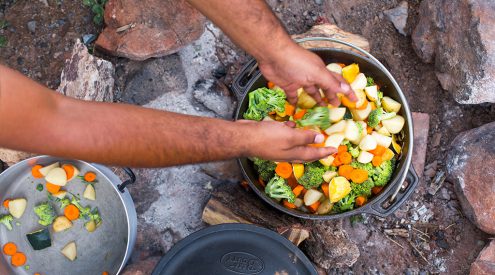We left Mapungubwe at 09:00 this morning and rolled into Pilgrim’s Rest at 17:30. It’s been a long day on the road, in fact the longest of the entire Braai4Heritage tour, and one that’s led us up from the dry baking heat of the lowveld to the brooding, thunder-storming hills of Mpumalanga. The entire town of Pilgrim’s Rest was declared a national monument in 1986 and there is a real sense of having stepped back in time without any of the fake, tacky feel that too often accompanies these large scale re-enactments of a bygone era.
The ride into the eastern escarpment of Mpumalanga is spectacular. As we climbed up along the Abel Erasmus pass, lichen-covered cliffs soared above the deep gorge to our left as thunder rolled through the muggy heat of late afternoon. In the 1850’s, Abel Erasmus owned much of the land around what is now Graskop town – the town itself having inherited the name from that of the original Erasmus farm. There, the apparently ferocious Abel (dubbed “˜Dubala Duzi’ by the locals, meaning “˜he who shoots at close range’), hunted and prospected and brought his brand of law and order to the mountainous and largely inaccessible region.
We stopped at the Blyde Rivier Canyon for a quick link for the TV cameras, and to admire the view. At 26 kilometres long, and averaging approximately 800 metres deep along its length, the Blyde River Canyon is one of the largest in the world and the views, though muted in the flat, cloud-covered light, were phenomenal. With such a long drive, however, we didn’t have much time to linger and after a few minutes it was back to the bakkies, and off to see the famed Bourke’s Luck Potholes at the start of the canyon, some 35 kilometres from Graskop.
The potholes, formed by the relentless, grinding waters of the Treur and Blyde Rivers, are named after gold prospector Tom Bourke who prospected around the confluence in the late 1880’s. Though completely unlucky (he found no gold at all on his claim), he is remembered for his successful prediction that gold would indeed be found somewhere in the area – he just got the exact location wrong, by 40 or 50 kilometres, give or take.
Driving through Graskop, we climbed up and over the (and I’ll say this, though Jan has already slagged me off for the weakness of this line once already today), very grassy hills to Pilgrim’s Rest, winding down through the 58 twists and turns of the Robbers Pass. With all the gold panned in the river valley below and the thick impenetrable bush to either side of the winding road, it’s not hard to understand how the pass got its name. These days, though gold is still mined in the area, the pass is less intimidating. Gold is still mined in the valley, but is now flown out by helicopter and there is little fear of bandits on the pass.
There was almost no movement on the long main street as we pulled into Pilgrim’s Rest. Old “˜of the era’ single story corrugated iron and wood buildings line the southern hillside with rusting wagons and equally rusty billboards swaying in the slight breeze. Gradually, as we adjusted to the scene after our eight long hours inside the cars, the silence was broken by increasingly animated (methinks slightly drunken) conversation, and a twin donkey-drawn cart pulled very slowly around the bend at the end of the road. In the colourful, if rickety looking trap, sat two old guys clearly having a fantastic time, holding the reins with care and discussing loudly what drinks they were goings to order at the pub up the road – obviously their next destination that evening.
It turns out that the owner of the donkeys who introduced himself to me later as Oom Piet Lang Oor (on account of the long ears of his animals I believe), had forsaken his car for the unhurried pleasures of donkey transport. Apparently he not only saves in petrol, but actually profits from the arrangement, buying R8 packets of fresh carrots from the grocer in Graskop and selling them for twice the price to tourists who then can’t wait to hand them right back to his donkeys – a win, win, win situation!
Named Yvonne and Maria (after Oom Piet’s late mother and mother-in-law – he clearly, by the way, has much affection for his beasts), and dressed in straw hats with bright red and yellow flowers, the donkeys made quite a sight as they clopped by at crawling speed, carrying their jovial passengers towards their next cold pint.
It seems the little town of Pilgrim’s Rest is well aware of its history, character and characters and in our short time there we experienced as much of it all as we could. The braai was hosted by the friendly folk of “˜The Vine’ restaurant and Johnny’s Pub, with Johnny junior and senior generous with the drinks and expert with the pan-fried (over the coals of course) rump steak respectively. It was without doubt the best steak we’ve had on the tour so far.
Tonight we sleep at Mulberry Lane Luxury Suites where I’ve already had a bath in the Jacuzzi on the deck and am now typing this as a monster thunder storm unleashes itself on the valley outside. Tomorrow is one of the days i’ve been looking forward to most on this tour – Pretoriuskop, the oldest rest camp in the Kruger National Park. We’ve got an early start so time for me to get to bed.
















